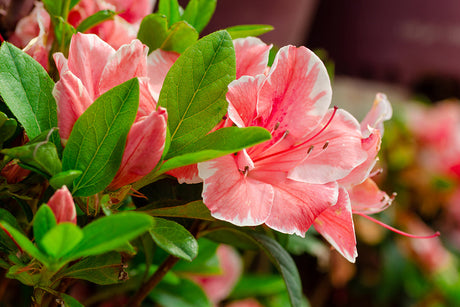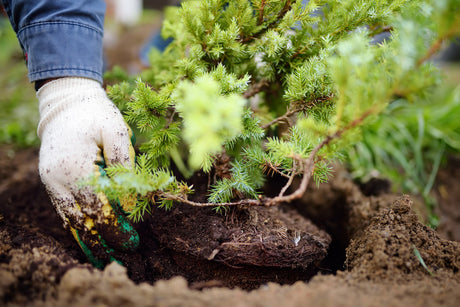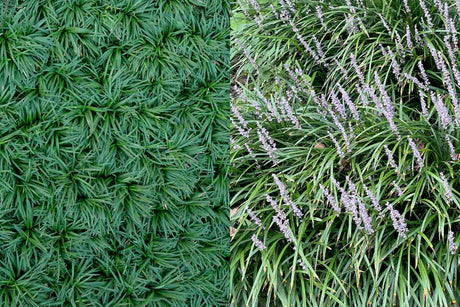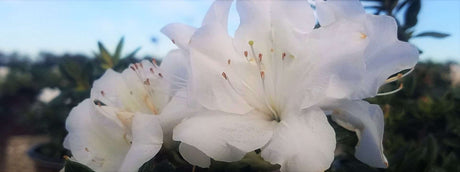

Fall Planting Tips
|
|
Time to read 3 min
|
|
Time to read 3 min
Cue up the music and strike up the band, it’s the most wonderful time of the year!
And yes I know it’s not Christmas time.. I’m talking about the Fall gardening season!
Everyone knows that Spring is a great time to deck out your landscape with new shrubs, trees, and bloomers in general. But not everybody knows that planting in the Fall has its own advantages.
Well, the soil is already warmed up from the summer! Soil temperature plays a big part in plant growth. When the soil is warm, plants take in more water and nutrients. Therefore, they establish quicker and grow more.
When you plant in Spring, your soil hasn’t completely warmed up. Additionally, unexpected cold days can set it back even further.
However, when you plant in Fall, the soil is thoroughly warmed. Meanwhile, the atmospheric temperatures are far milder than Summer temperatures. This creates an ideal scenario for new plantings.
The key is to plant at least 6-8 weeks before freezing temperatures will set in. For most areas in the continental U.S., this is from September through October. This will give your plant plenty of time to situate itself before it has to deal with the frosty chill of winter. Furthermore, soil stays warm longer than the air does, and roots grow until the soil reaches below 40° F. Depending on your area, roots are often able to continue to grow into December!
Planting in fall is similar to planting in the Spring. However, there are a few different things to consider.
1. Only fertilize with a traditional fertilizer when you’re more than 2 months away from your expected first frost date.
Fertilizing your plants will cause them to produce new growth. New growth is susceptible to frost damage. Therefore, if you fertilize too close to your first frost, you’ll end up losing any new growth that hasn’t hardened off. You also run the risk of possibly damaging the entire plant.
Don’t let this scare you from fertilizing your plants at the beginning of fall, though. Properly timed fall fertilization will set your plants up for an impressive spring display and a fantastic growing season in general.
If you’re less than 2 months away from your first frost, don’t fret, you can still get your plant primed for spring. Use a rooting hormone fertilizer instead of a traditional fertilizer. Roots are less susceptible to frost damage. This step will help to ensure that your plant is ready to blast off once warm weather rolls around again.
2. Don’t wait too long to prune
This is good advice for all of your plants, not just the new plantings. Pruning, like fertilization, encourages new growth. So this is best done at least 2 months before your first frost as well. After that window has passed, it’s best to wait until late winter or early spring.
3. Bring on the mulch
Mulch is important all year long, and fall planting is no different. Mulch provides a layer of protection for your new plantings as the temperature drops. A couple inches of wood mulch will add a layer of insurance to your plantings, shielding roots from drastic temperature changes.
Make sure not to pile your mulch directly against the trunk of your plant though, which can cause rot to take place.
4. Water regularly until freezing weather sets in
Water is always crucial for establishing new plantings. It allows roots to penetrate the soil more easily, and it makes them reach deeper into the soil. Additionally, plants that are watered well in fall are more equipped for dealing with freezing weather later on.
Watering 2-3 times per week suffices in most areas. However, check your plant to ensure that it isn’t staying soggy or drying out. Neither of these are desirable. Dry plants won’t grow well, and will be susceptible to winter damage. Soggy soil leads to root rot, which will kill your plant.
When it’s less than 40° F, don’t water your plants. They can’t absorb it. However, watering your plants on days when temperatures are above 40° F will keep the plant properly hydrated. Just a few watering's per month in the winter is plenty.
Instead of being a second-rate spring when it comes to planting, see fall for what it really is! An opportunity. A chance to get next-year’s landscape rocking and rolling as soon as the warm sun’s rays hit the ground. Future-You will appreciate your prep work.
Thanks for reading!
Contact Us with your questions, and Shop Our Plants if you like.





PBM Team |

PBM Team |

